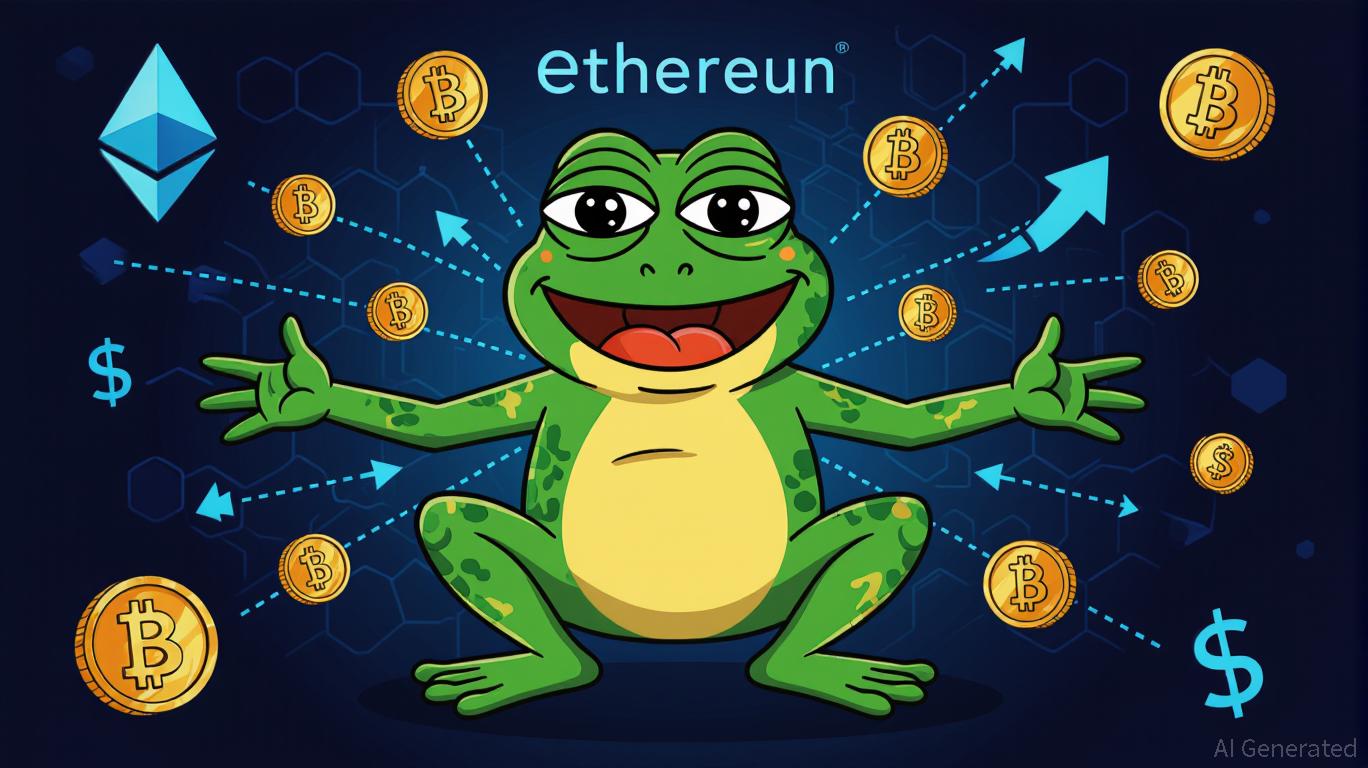In the ever-shifting landscape of Web3, where innovation and hype often collide, a new breed of digital assets has emerged to challenge conventional notions of value and utility. Meme coins—once dismissed as frivolous experiments in internet culture—have evolved into a serious, if volatile, segment of the crypto market. At the forefront of this movement is Little Pepe ($LILPEPE), an Ethereum-based meme coin that has raised over $23 million in its presale, capturing the attention of retail investors and signaling a broader shift in how digital assets are created, marketed, and consumed.

The Mechanics of Meme Coin Innovation
Little Pepe’s success lies in its ability to marry the whimsy of meme culture with the technical rigor of blockchain infrastructure. By leveraging Ethereum Layer 2 solutions, the project has addressed two critical pain points for retail investors: high transaction fees and slow processing times. This infrastructure allows for near-instant transactions at a fraction of the cost of traditional Ethereum networks, making it more accessible to a mass audience.
The presale structure itself is a masterclass in psychological engineering. With 14.25 billion tokens distributed across 12 sold-out stages, the project has created a sense of urgency and scarcity. Each subsequent stage increases the token price—Stage 12 at $0.0021, Stage 13 at $0.0022—encouraging early participation. This tiered approach mirrors the dynamics of a Dutch auction, where demand is met with incremental price discovery.
Moreover, Little Pepe has taken steps to differentiate itself from the countless scams and rug pulls that have plagued the meme coin space. A CertiK audit of its smart contracts, coupled with a transparent tokenomics model (no mint function, no taxes), has instilled a degree of trust in a market historically rife with uncertainty. The project has also allocated funds to liquidity provisioning and ecosystem development, signaling a commitment to long-term sustainability rather than short-term speculation.
Broader Market Dynamics and Retail Investor Behavior
The rise of Little Pepe cannot be viewed in isolation. It is part of a larger trend within the Ethereum ecosystem, where meme coins are increasingly adopting Layer 2 solutions to enhance scalability and user experience. This shift reflects a maturation of the market, as projects recognize the need to balance virality with technical credibility.
Retail investors, now more informed and active than ever, are driving this evolution. The $23 million raised by Little Pepe underscores the appetite for projects that combine community-driven narratives with tangible infrastructure. However, this enthusiasm comes with inherent risks. Meme coins remain highly speculative, with prices often dictated by social media sentiment, celebrity endorsements, and meme-driven hype. A single tweet or viral post can send valuations soaring or plummeting within hours.
The broader Ethereum market provides context for this phenomenon. As Ethereum transitions into a more institutional-grade asset—bolstered by ETF inflows and its classification as a utility token—the meme coin sector is piggybacking on this legitimacy. Yet, while Ethereum offers real-world use cases (smart contracts, decentralized finance), meme coins like Little Pepe rely on cultural resonance and speculative demand. This duality creates a unique investment opportunity, but one that requires careful risk management.
Strategic Entry Points and Risk Mitigation
For retail investors considering entry into the meme coin space, timing and diversification are paramount. Little Pepe’s presale represents a rare window of opportunity, where tokens are priced significantly lower than projected post-launch valuations (estimates suggest a potential $0.75 per token). However, this potential must be weighed against the project’s volatility and the broader market’s susceptibility to regulatory scrutiny.
A disciplined approach is essential. Dollar-cost averaging—gradually investing over time—can mitigate the impact of price swings, while stop-loss orders can limit downside risk. Additionally, investors should allocate only a small portion of their portfolios to meme coins, treating them as speculative bets rather than core holdings.
The Road Ahead: From Meme to Mainstream?
Little Pepe’s ambitions extend beyond its presale. The project has confirmed listings on two major centralized exchanges, with plans to expand to the world’s largest exchange in the near future. These developments could catalyze a surge in liquidity and visibility, but they also raise questions about the token’s ability to maintain its community-driven ethos in the face of institutional demand.
The ultimate test for Little Pepe—and the broader meme coin sector—will be its capacity to evolve beyond a viral fad. Can it transition from a speculative asset to a platform with real utility? Can it navigate the regulatory landscape without compromising its decentralized roots? These questions remain unanswered, but the project’s focus on infrastructure and security suggests a commitment to long-term viability.
Conclusion: A Cautionary Optimism
The rise of Ethereum meme coins like Little Pepe reflects the democratization of finance in the Web3 era. For the first time, retail investors have the tools and access to participate in projects that were once the domain of institutional players. Yet, this accessibility comes with a responsibility to understand the risks.
Little Pepe’s $23 million presale is a testament to the power of community and innovation, but it is also a reminder of the fragility of speculative markets. For investors willing to navigate the volatility, the project offers a compelling case study in how meme culture and blockchain technology can converge to create new value. However, as with any high-risk investment, the key to success lies in balancing optimism with caution—and in recognizing that the line between a viral sensation and a financial disaster is often razor-thin.
In the end, the story of Little Pepe is not just about a token. It is about the evolving relationship between technology, culture, and capital—a relationship that will continue to shape the future of finance in ways we are only beginning to understand.